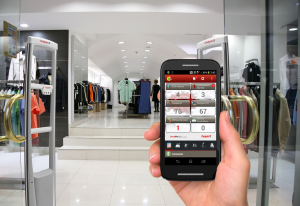
Let’s make 2016 a more profitable year by stopping losses before they occur. Think of it, as a retailer you run your operation, purchase and then sell the products you offer and try to hold your expenses down. But when you have employees that cause inventory theft, cash theft or any other loss it comes right off your bottom line and out of your pocket. The key is to keep theft from occurring before it happens!
Do you really know who is working for you? It is inexpensive and easy to find out. You should screen EVERY person you hire. Even after 20 years of running pre-employment background checks on people for our clients we are still amazed and what we see. It is not unusual to see drunk driving, theft, assault, shoplifting and even some very violent criminal records. Do you really want people like that working for you? That is like pointing a gun at yourself and hoping it is not loaded. People who are not responsible in life are not going to become magically better because they work for you.
Most states allow a statewide criminal records check. If not then we look in the counties they have lived in.
Another check that should be run is a credit history. This can be done on people that will be handling your cash and other assets. My wife was once the Branch Manager for a large chain of banks. The banks policy was to look at the credit history of the people that they were considering for employment. Their thought process was “If you cannot handle your own money why would we want you to handle the banks or the customers?”
Another check should be to verify that they are not on a sex offender list. Imagine this. You hire someone. They sexually assault a customer or another employee. Even if it is simply alleged and then investigation shows they are on a list. Your liability just skyrocketed.
In the past we could simply say we did not know that they were a sexual predator, criminal, thief…. But that is not the case anymore. The courts have leaned towards the position that it is easy and inexpensive to screen someone so if you do not you may be left in a terrible position both criminally and civilly.
So attack loss in 2016 up front. Get your employees background checked, screen any new employees and then follow up with an annual check. It may just make your year more profitable and one with less headaches.

 I’m seeing a huge spike in return fraud, so I’m betting you are too. For my particular stores, it is a huge problem. I will venture to say that it is the biggest and most financially impactful fraud scheme that is affecting my stores; and it’s only getting bigger. I’m fortunate enough to have a small team within our LP department that do nothing but review returns data. When they see something that is indicative of fraud, we actually cancel the store credits unless proof of purchase can be verified. We are poised to break 5 million dollars in suspended store credits this year. Insane.
I’m seeing a huge spike in return fraud, so I’m betting you are too. For my particular stores, it is a huge problem. I will venture to say that it is the biggest and most financially impactful fraud scheme that is affecting my stores; and it’s only getting bigger. I’m fortunate enough to have a small team within our LP department that do nothing but review returns data. When they see something that is indicative of fraud, we actually cancel the store credits unless proof of purchase can be verified. We are poised to break 5 million dollars in suspended store credits this year. Insane. The holidays are over and all over the country retail personnel are saying, “I can’t do that again. I’ve got to get out of retail.” Some of them are, understandably, experiencing a momentary stress or anxiety reaction. After they’ve had some time to de-stress they’ll bounce back and want to stay in the field.
The holidays are over and all over the country retail personnel are saying, “I can’t do that again. I’ve got to get out of retail.” Some of them are, understandably, experiencing a momentary stress or anxiety reaction. After they’ve had some time to de-stress they’ll bounce back and want to stay in the field. The holidays are over and looking at your sales, revenue, expenses, profits and inventory, you are probably realizing you had a good year, or a year where inventory has disappeared and don’t know where it went.
The holidays are over and looking at your sales, revenue, expenses, profits and inventory, you are probably realizing you had a good year, or a year where inventory has disappeared and don’t know where it went.
 Shoplifting costs the retail industry million of dollars daily.
Shoplifting costs the retail industry million of dollars daily. 



